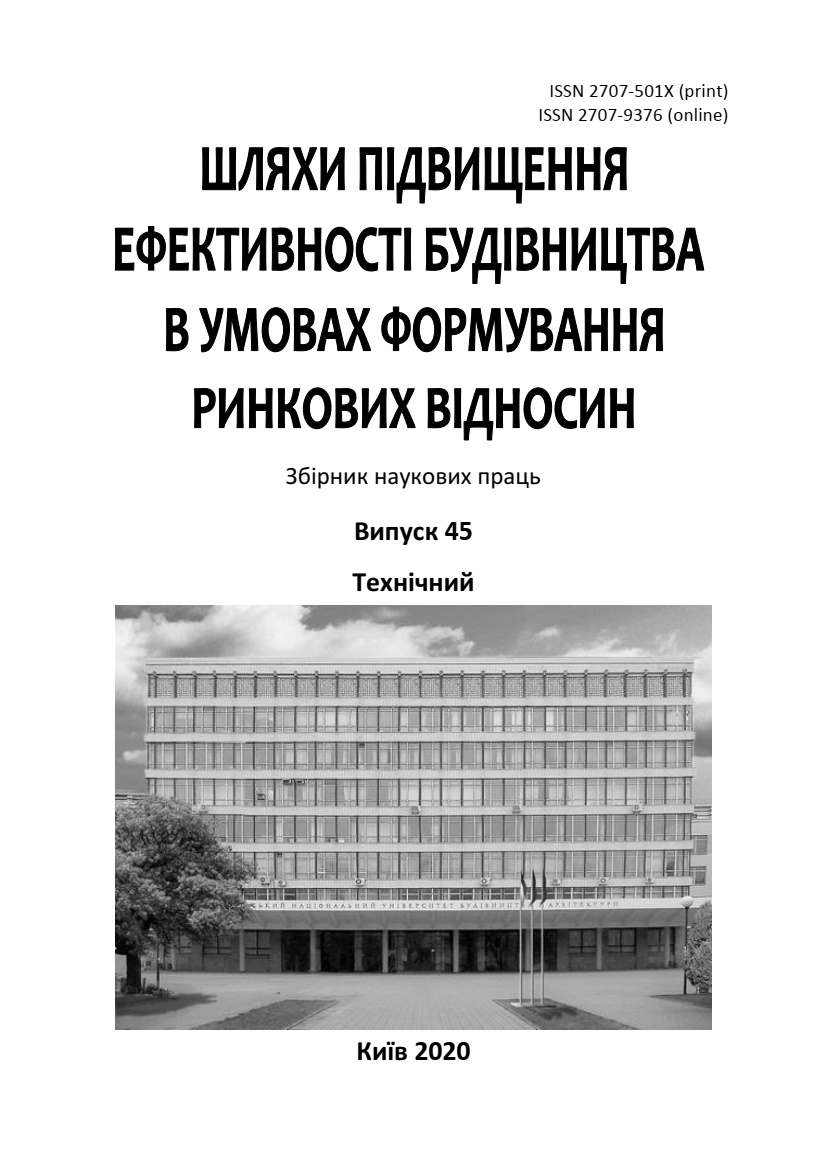Technical advantages of the city sedimentation water reconstruction system
DOI:
https://doi.org/10.32347/2707-501x.2020.45.26-36Keywords:
recurrent water, accumulation, cavitation generator, suspended matter, mechanical erosion, water balance, temperature, system.Abstract
The work designs a system of production components of urban infrastructure to create an energy efficient city. Hydraulic, hydrological, heat exchange processes of interaction of water structure and elements of treatment structures for centrifugal deposition of suspended matter have been investigated. Depending on the degree of contamination, devices for resource recovery are calculated. The duration of recovery operations was investigated. The technological cycle of re-water recovery and the number of cycles of cavitation generator for controlled conditioning of conditionally clean and dirty waters have been determined. Reverse osmosis devices for the recovery of conditionally pure water have been investigated. Categorized potential effluents of industrial waters as appropriate for restoration. Samples of experimental sediments for the needs of the construction industry at operating and supercritical modes of operation of the technological stream were obtained. A mathematical model of the productivity of irrigation of agro-centers in drought conditions with drip irrigation by repeated water has been developed.
References
Jorgensen S.E. Handbook of Ecologica Models Used in Ecosystem and Environmental Management/CRC Press University Denmark.Copenhagen, 2011. 600 р.
Назаренко O.M. Ризик менеджмент водокористувачів річки Дніпро: монографія/ Запоріжжя: СТС Групп, 2018. 208 с.
Олійник О. Я., Айрапетян Т.С. Розрахунок кисневого режиму при біологічному очисщенні стічних вод в аеротенках-змшувачах з закріпленим і зваженим біоценозом // Науковий вісник будівництва. – Харків: ХНУБА, ХОТВ АБУ. – 2019. – №1(94). – С. 187–191.
Утеплення, ремонт та реконструкція плоских покрівель цивільних будівель: посібник / Авраменко Ю.О., Лещенко М.В., Магас Н.М. [та ін.]; за ред. О.В. Семка. – Полтава: ТОВ «Астрая», 2017. – 238 с.
Marker B.A., Breure A.M., Zechmeister H.G. Bioindicators and biomonitors. Principles, concepts and application. Handbook/ElsevrierScienceLtd. 2003. 1017 р.
Ремонт и эксплуатация рулонных кровель: Практическое пособие для работников ЖКХ / Н.М. Вавуло, А.Е. Харьковский, Р.Ф. Зарипов, О.Л. Рогачевский, В.А. Желнинский, И.М. Дегтярев, А.Н. Лычиц, Д.А. Фисюренко. – М.; СПб.: ООО «АТМ», 2011. – 86 с.
Syvitski J., Cohen S., Miara A., Best J. River temperature and the thermal-dynamic transport of sediment. Global and Planetary Change. Volume 178, 7/2019, p. 168–183.
Elgueta M., Astaburuaga M., Hassan A. Sediment storage, partial transport, and the evolution of an experimental gravel bed under changing sediment supply regimes Geomorphology. Vol. 330, 4/2019, p. 1–12.
Kehui Xu, Samuel J., Bentley J., Day W., Freeman A. A review of sediment diversion in the Mississippi River Deltaic Plain. Estuarine, Coastal and Shelf Science. 5/2019, 235p.
Kuprienko P., Lapowska S., Kuprienko N, 2017. Nanomodified natural aluminum silicates in technology treatment of industrial waste and the production of building materials. Underwater technologies, Vol. 05, 74–83.
Яркин В.А. Определение эффективности работы перегородчатого смесителя коридорного типа усовешенствованной конструкции /В.А. Яркин, С.М. Эпоян, Г.И. Сухоруков// Науковий вісник будівництва. – Харків: ХНУБА, ХОТВ АБУ. – 2018. – Т.91, №1. – С. 210–214.
Эпоян С.М. Метод повышения эффективности смешения природной воды с реагентом и методика проведения исследований / С.М. Эпоян, Г.И. Сухоруков, В.А. Яркин// Науковий вісник будівництва. – Харків: ХНУБА, ХОТВ АБУ. – 2016. – №1(83). – С.187-193.
Проскурнин О. А., Захарченко Н. И., Капанина О. И. Нормирование состава теплообменных сточных вод // Науковий вісник будівництва. – Харків: ХНУБА, ХОТВ АБУ. – 2018. – №4(92). – С.226–231.
ДБН В.2.6-220:2017 Покриття будівель і споруд. [Текст]: – К.: Міністерство регіонального розвитку та будівництва України, 2017. – 43 с.
ДСТУ-Н Б В.1.2-18:2016. Настанова щодо обстеження будівель і споруд для визначення та оцінки їх технічного стану. – К.: ДП «УкрНД-НЦ», 2017. – 45 с.
Downloads
Published
How to Cite
Issue
Section
License
Copyright (c) 2021 V. I. Donenko, O. M. Nazarenko, I. A. Nazarenko, M. P. Marchenko, V. P. Sulima

This work is licensed under a Creative Commons Attribution 4.0 International License.
Authors who publish with this journal agree to the following terms:
- Authors retain copyright and grant the journal right of first publication with the work simultaneously licensed under a Creative Commons Attribution License that allows others to share the work with an acknowledgement of the work's authorship and initial publication in this journal.
- Authors are able to enter into separate, additional contractual arrangements for the non-exclusive distribution of the journal's published version of the work (e.g., post it to an institutional repository or publish it in a book), with an acknowledgement of its initial publication in this journal.
- Authors are permitted and encouraged to post their work online (e.g., in institutional repositories or on their website) prior to and during the submission process, as it can lead to productive exchanges, as well as earlier and greater citation of published work (See The Effect of Open Access).

